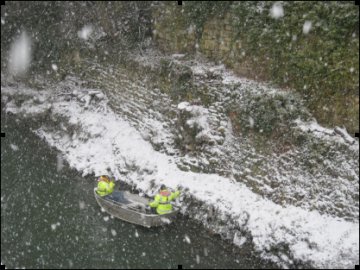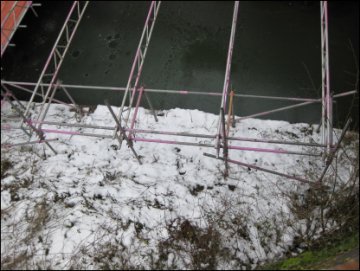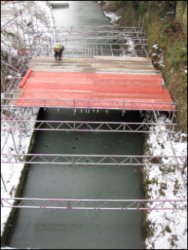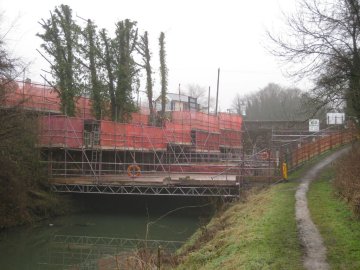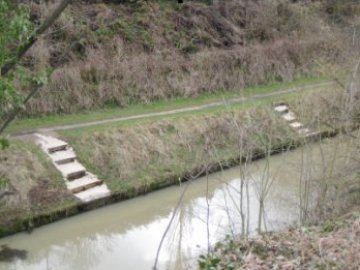Kiveton Retaining Wall (Cutting No. 8), Chesterfield CanalWhole Project Award |
... |
89.2% |
The Project
The Kiveton Retaining Wall forms Cutting No.8 of the Chesterfield Canal, alongside Kiveton Park Railway Station. The lower part of the wall dates from the canal’s construction in 1777, and the higher part around 1841, when it was raised to about 5m height to support the railway embankment.
Following an Options Appraisal by Mott MacDonald, and further investigations into the wall’s stability, British Waterways decided on removal of selected trees and vegetation and partial rebuilding.
British Waterways' previous projects, that had gained CEEQUAL awards, were used to identify key areas with scope for improvement at the outset.
British Waterways’ Environmental Management System, Appraisal forms and Sustainability Register were used throughout the project, allowing issues to be managed and actions reported, with specific Toolbox talks given to teams on site. Other systems, e.g. British Waterways’s Biodiversity Action Plan and Heritage Standards, contributed to the project, with client and contractor working together to maintain evidence and records.


Kiverton retaining wall - before and after
Heritage conservation
In addition to cost savings, a further benefit of this approach was that the work followed the conservation principle of minimum intervention: the structure adjoins the Grade II listed ‘Dog Kennel Bridge’, and as such forms part of its curtilage. As a result of these working methods, Listed Building Consent was not required. Heritage advice was provided throughout and findings recorded.
The stone wall was at first thought to be dry-built, but close inspection found it to have a lime mortar bond. A local source of matching sandstone was found for the work.
A patch of the wall was found to be the blocked-up entrance to a tunnel of cut stone, which seems likely to have been linked to a nearby quarry used to supply the stone for the canal’s construction.
Water vole burrows were marked out by the British Waterways ecologist at the start of the project |
View of site with scaffolding and protection of watercourse |
Scaffolding was installed to avoid marked water vole burrows |
British waterways ecologist investigated cracks and crevices in the wall before the stone repair work was carried out. |
Waste and resource use
In addition to confining repairs only to those areas of the wall in need, stone was re-used in the wall. Where stone was not fit for purpose, it was used in the riprap, to minimise waste.
To provide room for the toe stabilisation materials, localised dredging was carried out. The silt was found to be non-hazardous, and used as backfill behind the riprap.
All timber for fencing and scaffold boards was specified to be from FSC-approved sources, procured through British Waterways’ national suppliers. Rip-rap was transported to site by boat.
Ecology
A detailed bat survey of the stone wall was carried out once the scaffolding had been erected. No signs of bats were found, though gaps were left in some joints as potential roost sites. Only vegetation considered to threaten the structure was removed.
A survey of the toe of the cutting was carried out from a boat, finding evidence of water voles. To avoid blocking access to burrows, the riprap used at the toe was installed close to water level and scaffolding was sited 1m above it. Vegetation was strimmed and kept short prior to the works, and this element of the works was programmed for February/March, when water voles are least active.
The rip-rap itself has provided habitat enhancements for invertebrates and marginal aquatic vegetation, and the scaffolding method also prevented water pollution from the construction works.
Towpath |
Community and landowner engagement
Through consultation with Network Rail and adjacent landowners, work was planned to minimise disruption to the station car park by carrying out the arboricultural work at weekends.
Fencing was replaced and a new vehicle barrier was installed at the top of the wall to improve visitor safety.
In addition, canal users were informed of the works through British Waterways’ User Group meetings and direct correspondence. The canal is well-used for fishing, and angling pegs on the towpath side of the cutting were improved as part of the project.
Fishing platforms |


